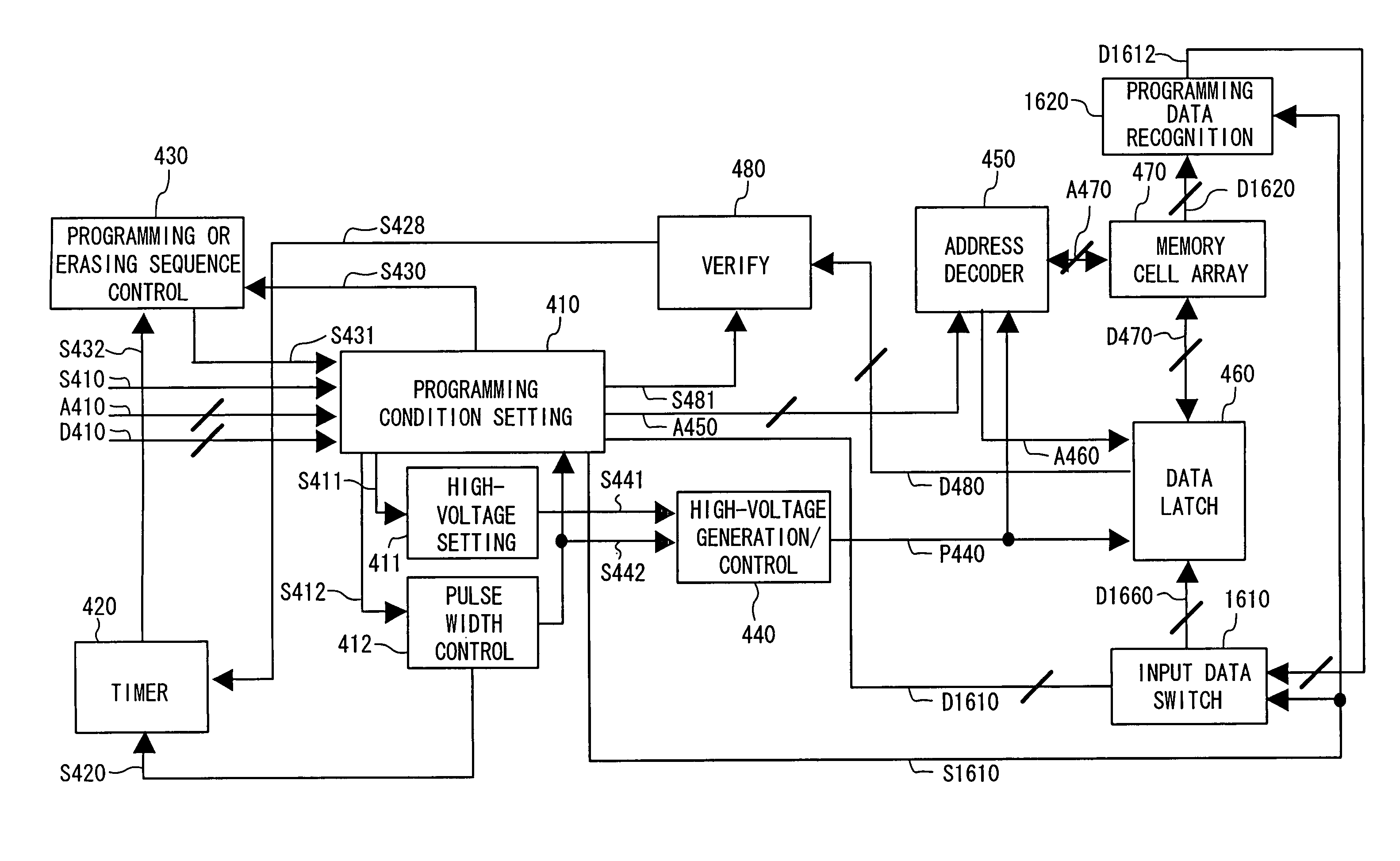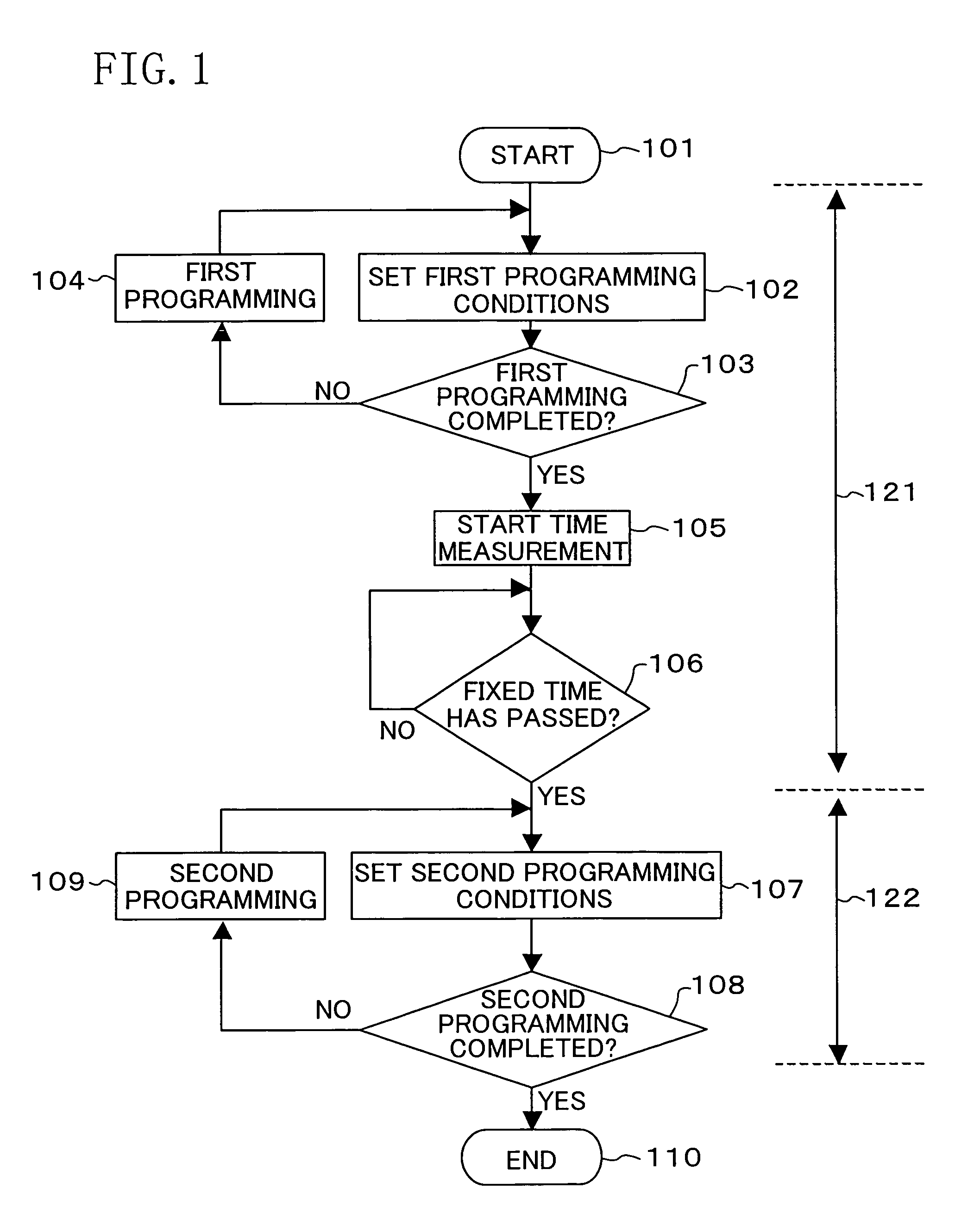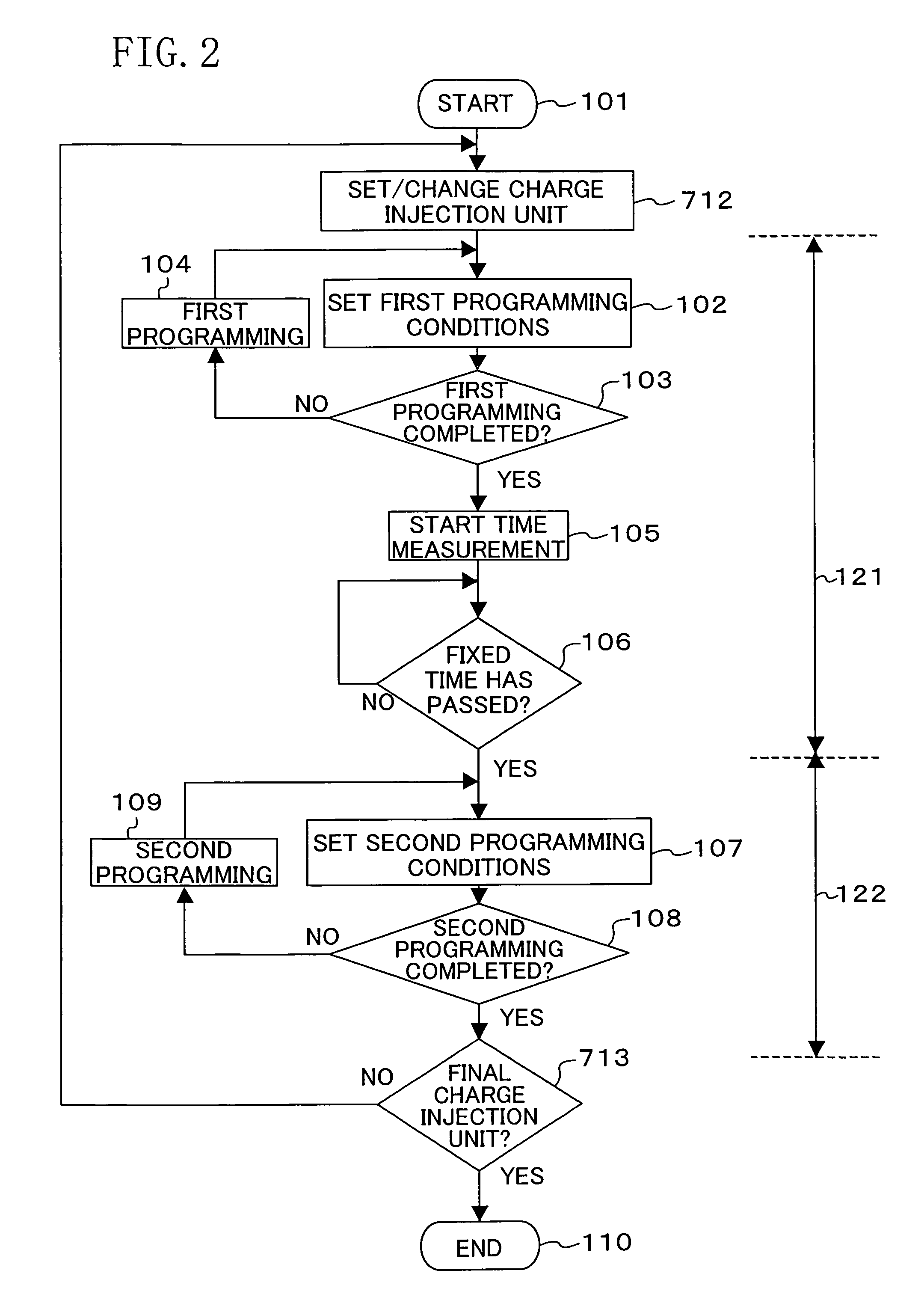Nonvolatile semiconductor memory device and programming or erasing method therefor
a nonvolatile semiconductor and memory device technology, applied in static storage, digital storage, instruments, etc., can solve the problems of lowering the access speed, erroneous data read in the market, and deteriorating retention characteristics, so as to improve the subsequent data retention characteristic and the effect of data retention characteristi
- Summary
- Abstract
- Description
- Claims
- Application Information
AI Technical Summary
Benefits of technology
Problems solved by technology
Method used
Image
Examples
embodiment 2
[0074]FIG. 6 is a flowchart showing a programming or erasing method for a nonvolatile semiconductor memory device in Embodiment 2 of the present invention. Hereinafter, a method adopted when programming is made for a particular nonvolatile memory cell will be described.
[0075]In the flowchart of FIG. 6, a block 611 is for deciding whether or not the first charge injection has been executed a predetermined number of times.
[0076]Once completion of the first programming is decided in the decision 103, the processing 105 of starting time measurement is executed. Whether or not a fixed time has passed from the start of time measurement is determined in the decision 106. If the fixed time has passed, then the flow proceeds to the decision 611 of determining whether or not the first charge injection has been executed a predetermined number of times. If it is determined in the decision 611 that the first charge injection has been executed a predetermined number of times, the flow proceeds to...
embodiment 3
[0083]FIG. 8A shows an execution sequence in Embodiment 3 of the present invention. Referring to FIG. 8A, a fixed time 923 is secured from completion of first programming 921 until start of second programming 922. Note that the first charge injection corresponds to a range 911 including the first programming 921 and the fixed time 923 and the second charge injection corresponds to a range 912 including the second programming 922. A longer fixed time 923 is more desirable. In particular, the fixed time 923 may be a time longer than the time required for normal verify operation or read operation, or a time in which electrons trapped under the first programming have been bound with surrounding charge (holes) already trapped before the first programming.
[0084]In programming for a memory cell array, however, if the sequence of FIG. 8A is executed serially for a plurality of addresses, the time required for programming will disadvantageously increase. In Embodiment 3, this problem can be ...
embodiment 4
[0099]In Embodiment 4, both the first programming and the second programming are executed under given conditions without verify operation. In such programming under given conditions, programming is performed with the programming or erasing voltage and the pulse width being fixed, for example.
[0100]FIGS. 10A through 10H show a programming or erasing method for a nonvolatile semiconductor memory device in Embodiment 4 of the present invention. Hereinafter, a method adopted when programming is made for a particular nonvolatile memory cell will be described.
[0101]FIGS. 10A through 10D show distributions of the memory cell threshold voltage, where the x-axis represents the memory cell threshold voltage and the y-axis represents the number of memory cells targeted for programming. FIGS. 10E through 10H show the probability density distributions in the neighborhood of the first impurity region 1803 in FIG. 19, where the x-axis represents the distance in the direction of arrow x in FIG. 19 ...
PUM
 Login to View More
Login to View More Abstract
Description
Claims
Application Information
 Login to View More
Login to View More - R&D
- Intellectual Property
- Life Sciences
- Materials
- Tech Scout
- Unparalleled Data Quality
- Higher Quality Content
- 60% Fewer Hallucinations
Browse by: Latest US Patents, China's latest patents, Technical Efficacy Thesaurus, Application Domain, Technology Topic, Popular Technical Reports.
© 2025 PatSnap. All rights reserved.Legal|Privacy policy|Modern Slavery Act Transparency Statement|Sitemap|About US| Contact US: help@patsnap.com



